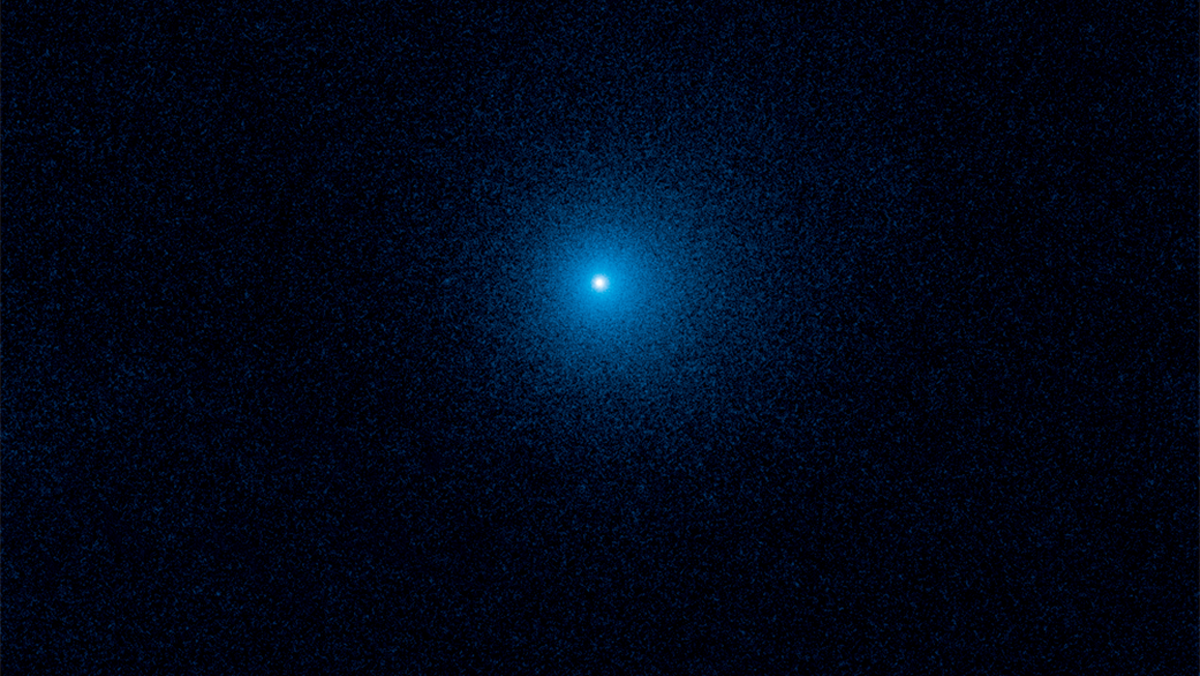What time will the huge comet K2 make its closest approach to Earth?

A huge comet is going to make a safe flyby of Earth in just a few more days.
Comet C/2017 K2 (PANSTARRS), called K2 for short, is one of the farthest active comets ever spotted. This little world will whizz by our planet on July 13 at a relatively far distance.
The official time of closest approach will be 11:09 p.m. EDT (0309 GMT July 14), when the comet will be 1.8 astronomical units from the center of our planet, according to data from NASA's Jet Propulsion Laboratory. (An astronomical unit is the average distance between the sun and Earth: about 93 million miles or 150 million kilometers.)
While the comet will be a little far and faint, it's still an exciting time for astronomers. It was spotted way back in 2017 in the outer solar system and is finally drawing near enough to Earth for amateurs to contemplate seeing it in binoculars or telescopes, although how bright K2 will get is a big unknown.
Related: Giant comet was active way farther from the sun than expected, scientists confirm
Some outlets, like EarthSky, have predicted the comet might eventually get as bright as magnitude 7, and that the comet may brighten even after close approach to our planet as K2 draws nearer to the sun.
That's still too dim for naked eye observing, as the best most folks can do is to see stars of magnitude 6 in dark-sky conditions.
Breaking space news, the latest updates on rocket launches, skywatching events and more!
For people with binoculars or a telescope, however, magnitude 7 is well within reach. If visible, the comet will likely appear quite diffuse as it releases gases due to the heat and pressure of the sun affecting its surface.
Professional observatories will be interested in learning the size of the nucleus, which is under debate. Hubble Space Telescope observations suggested it might be only 11 miles (18 km) across at most, while work with the Canada–France–Hawaii Telescope (CFHT) suggests a range of between 18 and 100 miles (30 to 160 km), according to EarthSky.
If you're looking for binoculars or a telescope to see the comet in the night sky, check out our guide for the best binocular deals and the best telescope deals now. If you need equipment for photography, consider our guides for the best cameras for astrophotography and the best lenses for astrophotography to make sure you're ready for the next comet sighting.
Follow Elizabeth Howell on Twitter @howellspace. Follow us on Twitter @Spacedotcom and on Facebook.

Elizabeth Howell (she/her), Ph.D., was a staff writer in the spaceflight channel between 2022 and 2024 specializing in Canadian space news. She was contributing writer for Space.com for 10 years from 2012 to 2024. Elizabeth's reporting includes multiple exclusives with the White House, leading world coverage about a lost-and-found space tomato on the International Space Station, witnessing five human spaceflight launches on two continents, flying parabolic, working inside a spacesuit, and participating in a simulated Mars mission. Her latest book, "Why Am I Taller?" (ECW Press, 2022) is co-written with astronaut Dave Williams.
